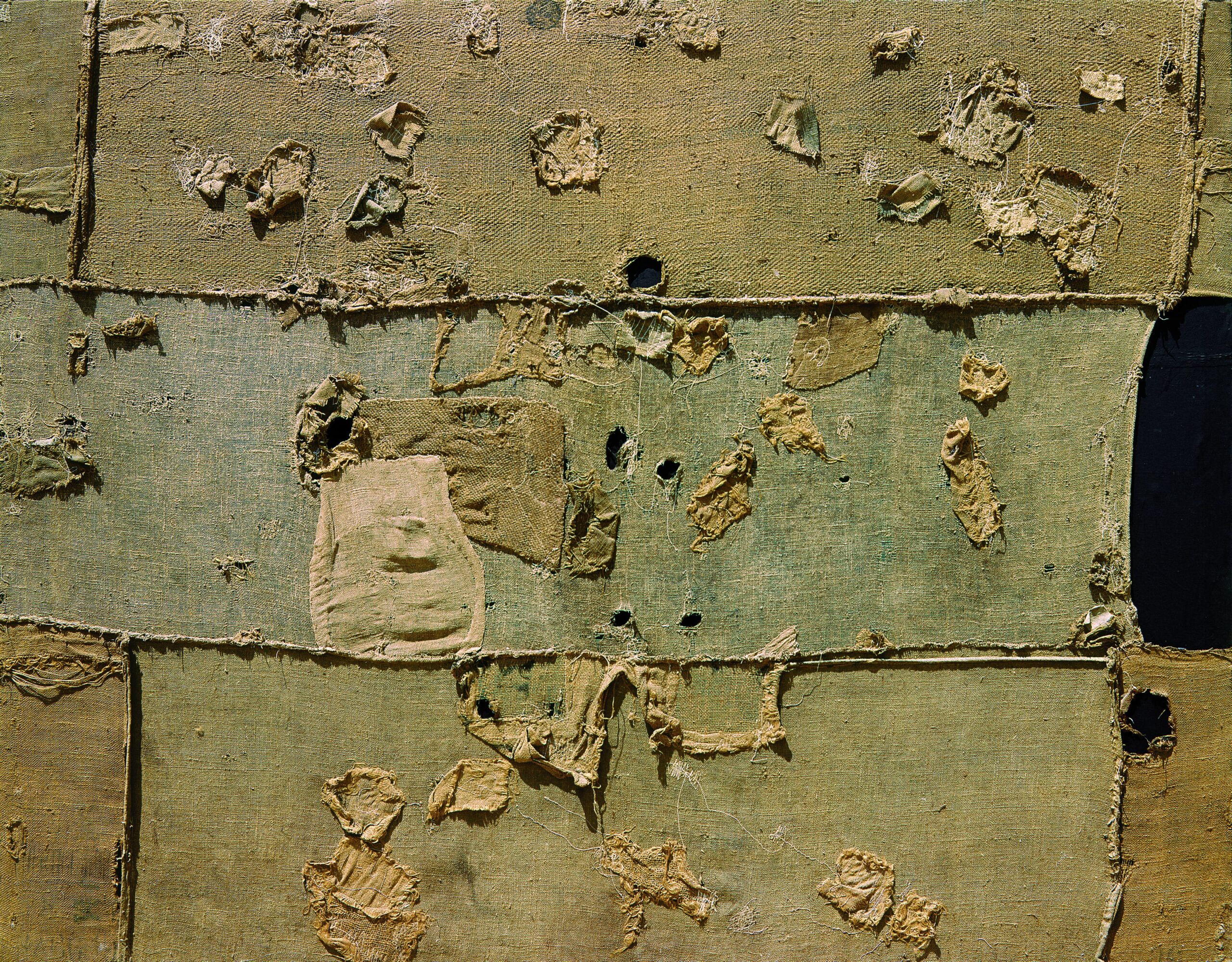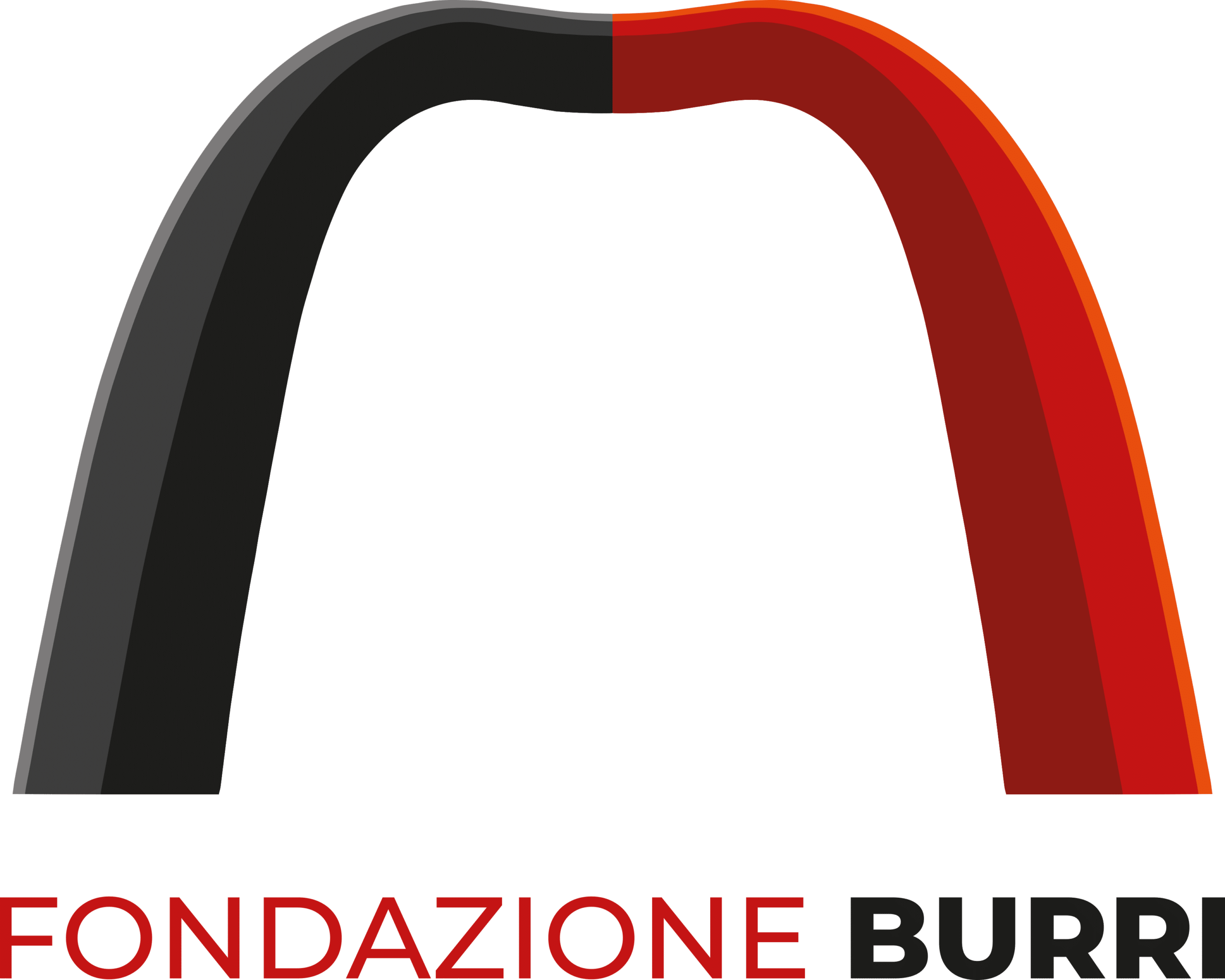BURRI. SHAPE SPACE BALANCE

Grande Sacco, 1957\58
Sacco, acrilico su tela
cm. 196×252
Fondazione Palazzo Albizzini Collezione Burri, Città di Castello
To give a synthetic image of the art of a great artist like Alberto Burri, Fondazione Palazzo Albizzini Collezione Burri answered the invitation of the Meeting by placing the largest canvas ever made by the Master at the center of the exhibition area, the Sacco of 1969 conceived and created for the backdrop of the first act of the theatrical drama “Adventure of a poor Christian” from the novel by Ignazio Silone. Around the imposing work has been built an exhaustive path suitable to shed light on this great outsider of painting. With the evocative projections of the Grande Cretto Gibellina and other cycles belonging to different seasons of his work, the public will have the opportunity to view a significant part of the work of this great protagonist of Italian and international art.
Burri’s work, starting from the 50s of the twentieth century and until his death in 1995, has marked the scene of contemporary art to this day. His painting, mostly based on extra-pictorial materials such as tar, the experience of the ‘sacks’, the combustion of plastic, wood, iron, the acrovinyl compounds of the ‘cretti’ and cellotex, has traced a new frequency of visual language on which the generations following him have tuned in, observing the orientation indicated by him regarding the values of Shape, Space and Balance to equip the ‘presence’ of painting.
Biography
Alberto Burri was born in Città di Castello (Perugia) on March 12, 1915. He graduated in medicine in 1940. As a medical officer he was taken prisoner by the British in Tunisia in 1943 and handed over to the US allies who sent him to the Hereford camp in Texas. Here he began to paint. Back in Italy in 1946, he settled in Rome and devoted himself definitively to painting. In Rome in ’47 and ’48 he held his first two solo shows. In 1948, after a trip to Paris, the abstract choice imposed itself definitively and his interest focused on the expressive potential of the material. In 1950 the magazine French “Cahiers d’Art” reported his work to the international public. From the same year the Sacchi take on importance, until they predominate in the personal exhibitions that, after Rome, are now also held in various American and European cities. Later Combustions, Woods, Irons, Plastics appear. The 70s recorded a progressive rarefaction of technical and formal means towards monumental solutions, from Cretti to Cellotex.
From the end of the 70s Burri realizes complex pictorial cycles of which the first was Il Viaggio -The Travel-, presented in Città di Castello in 1979 and passed the following year in Munich, then Orti -Orchards- in Florence in the same ’80, Sestante in Venice (1983) and Annottarsi -Turn into night- exhibited in Rome and Venice (1985 and ’87). In Città di Castello in 1978, he founded the Fondazione Palazzo Albizzini Collezione Burri, with the institutional task of promoting, managing, and disseminating his work. In the fifteenth-century Palazzo Albizzini in 1981 he permanently exhibited a selection of his works. In 1989 the Palazzo Albizzini Foundation acquired the Ex Seccatoi del Tabacco -Ex Tobacco Sueegees- , a complex of industrial buildings transformed into a gigantic sculpture, an ideal container for large pictorial cycles and sculptures, to complete the first nucleus of Palazzo Albizzini.
Alberto Burri died in Nice on February 13, 1995.
Thanks for collaboration Fondazione Palazzo Albizzini Collezione Burri









